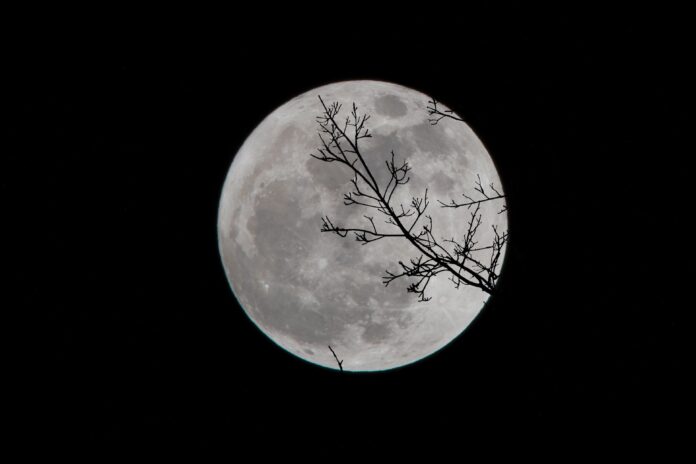A remarkable and astonishing natural phenomenon graced our skies on the dates of Wednesday and Thursday, specifically August 31, 2023. This celestial spectacle, none other than the super blue moon, unfolded before our eyes, combining the grandeur of a supermoon with the enigma of a blue moon. It’s important to note that despite its intriguing name, the moon did not take on a blue hue, although it did appear slightly larger than usual.
The nomenclature “super blue moon” refers to the convergence of two celestial occurrences: the supermoon and the blue moon.
A supermoon, a term familiar to many, designates a full moon that occurs when our lunar neighbor finds itself in the closest proximity to Earth within its elliptical orbit. This peculiarity arises from the moon’s orbital trajectory, which deviates from a perfect circle, allowing it to approach both the nearest and farthest points from Earth.
In this particular instance, the full moon, characterized by its 100 percent illumination when reflecting the radiant sunlight, graced our night skies on August 31, 2023, at precisely 08:35 AM local time (WIB). In accordance with data sourced from Time and Date, the moon had just reached its perigee, its closest approach to Earth, on August 30, 2023, at 10:54 PM WIB, nestled at a distance of 357,181 kilometers.
The discernible discrepancy in size and luminosity of the moon becomes most pronounced during the moments of moonrise and moonset when it nears the horizon. Compared to its size during apogee, the farthest point from Earth, this supermoon at perigee appears a noteworthy 14 percent larger.
This alteration in size is primarily attributed to the moon’s shifting distance from apogee to perigee, dwindling from the typical 408,000 kilometers to an approximate 350,000 kilometers.
Meanwhile, the brilliance of the moon at perigee outshines its counterpart at apogee by a remarkable 30 percent. Thus, when contrasted with an average full moon, the supermoon exhibits only a marginal increase in size and luminance.
Now, turning our attention to the concept of a “blue moon,” it is crucial to clarify that this term bears no relation to the moon’s actual color; instead, it pertains to the occurrence of a second full moon within a single Gregorian calendar month. This modern definition of a blue moon emerged within the pages of the esteemed astronomical magazine, Sky and Telescope, dating back to the year 1946.
Should one harken back to the archaic definition dating to the 1500s, as expounded upon by NASA’s official website on August 24, 2023, a blue moon would signify the third full moon within a season that traditionally features four full moons.
Presently, the northern hemisphere revels in the embrace of summer. From a meteorological perspective, the summer season in the northern hemisphere spans the period from June 1 to August 31. In regions blessed with the full spectrum of seasons, each season typically stretches across a trio of months.
Astronomically, however, the onset of summer coincides with the momentous occasion of the June solstice, which transpires sometime between the dates of June 20 and June 22. Summer, as defined astronomically, endures until the September equinox, a celestial alignment that falls within the timeframe of September 21 to September 24.
The June solstice represents the sun’s zenith, marking its apparent journey to its farthest point in the northern hemisphere. Conversely, the September equinox materializes when the sun resides directly above Earth’s equator.
Returning to the matter of the blue moon, if one were to adhere to the older definition, the occurrence of a blue moon would have graced us on August 2, 2023. Yet, adopting the modern interpretation, it is the full moon of August 31 that earns the distinction of being a blue moon. Therefore, the classical definition of a blue moon has been consigned to the annals of history, supplanted by the more widely accepted contemporary interpretation.
Given that the pinnacle of the full moon on August 31, 2023, in Indonesia transpired during the daylight hours, specifically in the morning, the inhabitants of Indonesia were afforded the exquisite opportunity to behold the resplendent super blue moon, both before and after its zenith, spanning across the twilight hours of Wednesday (30/8/2023) and Thursday (31/8/2023), from the waning moments of sunset to the glorious break of dawn.























